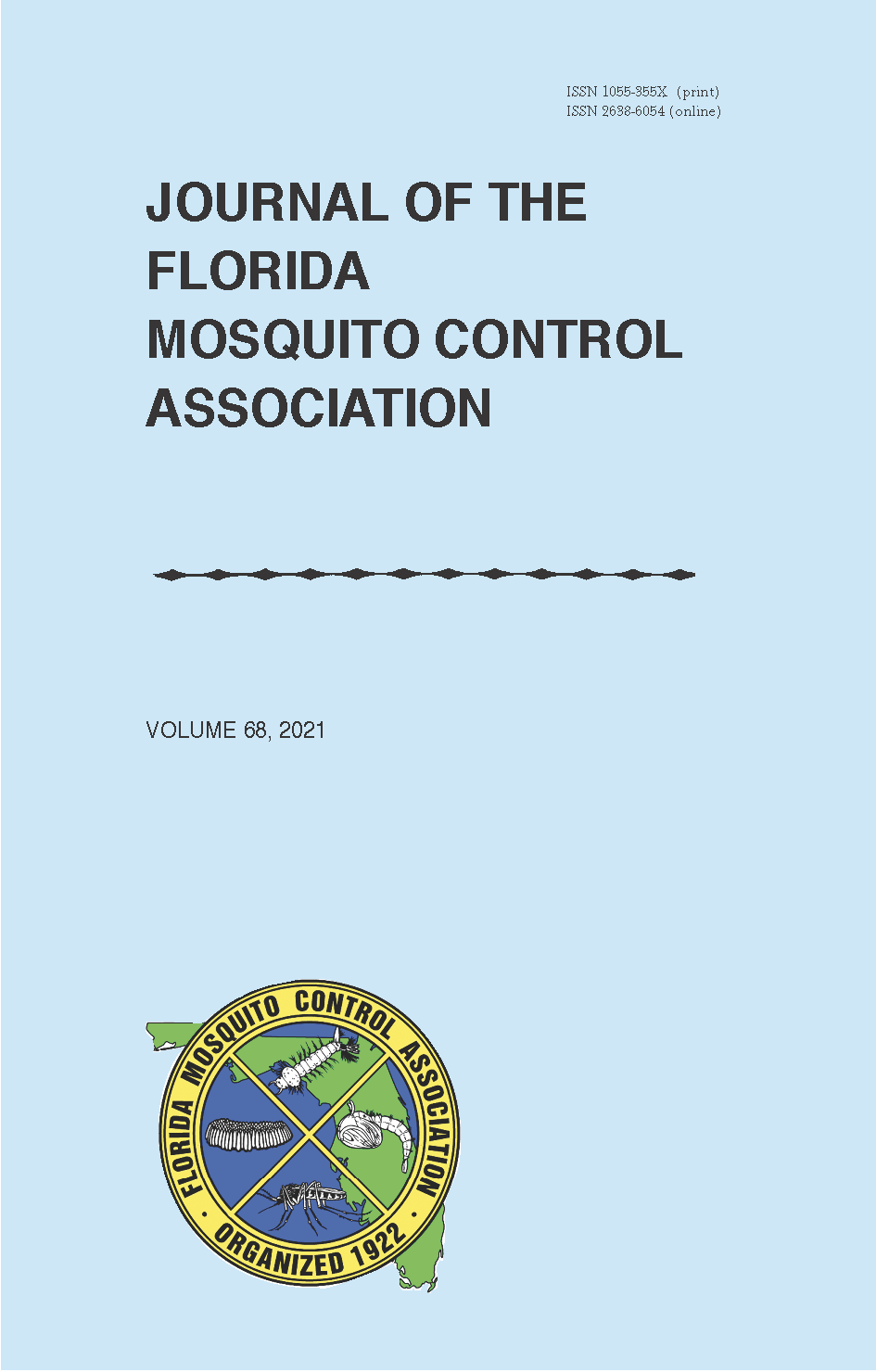RELATIONSHIP OF PRECIPITATION AND HABITAT TO THE SPATIAL AND TEMPORAL ABUNDANCE OF AEDES ATLANTICUS AND AEDES INFIRMATUS IN ST. JOHNS COUNTY, FLORIDA
DOI:
https://doi.org/10.32473/jfmca.v68i1.129095Abstract
The purpose of this study was to perform descriptive and inferential analyses to better understand the presence of the abundant mosquito species Aedes atlanticus and Aedes infirmatus in St. Johns County, northeastern Florida. Historical surveillance data (2010-2019) obtained from Anastasia Mosquito Control District of St. Johns County, St. Augustine, FL, was organized to graph temporal mosquito abundance trends and inverse distance weighted (IDW) interpolation was used to map spatial distribution patterns of mosquitoes. Precipitation and habitat composition were investigated as spatiotemporal predictors of mosquito abundance using Pearson’s correlation statistics. There were considerable and inconsistent fluctuations in the population abundance of Ae. atlanticus and Ae. infirmatus across and within individual surveillance seasons during the last decade. Precipitation was significantly associated with total county-wide mosquito population counts by season (Ae. atlanticus, R = 0.810, p = 0.005; Ae. infirmatus, R = 0.850, p = 0.002), while the association with weekly mosquito population trends was inconsistently significant across species, lag time, and years. The proportion of surrounding land covered by upland forest, water, and agriculture was associated with species abundance at the spatial level of individual trap sites. Overall, the results identify that Ae. atlanticus and Ae. infirmatus share a spatiotemporal relationship and are similarly impacted by rainfall and habitat type. Findings of the study might help to inform improved surveillance by integrating IDW estimation maps with current district resources and improved knowledge of species’ ecology.

